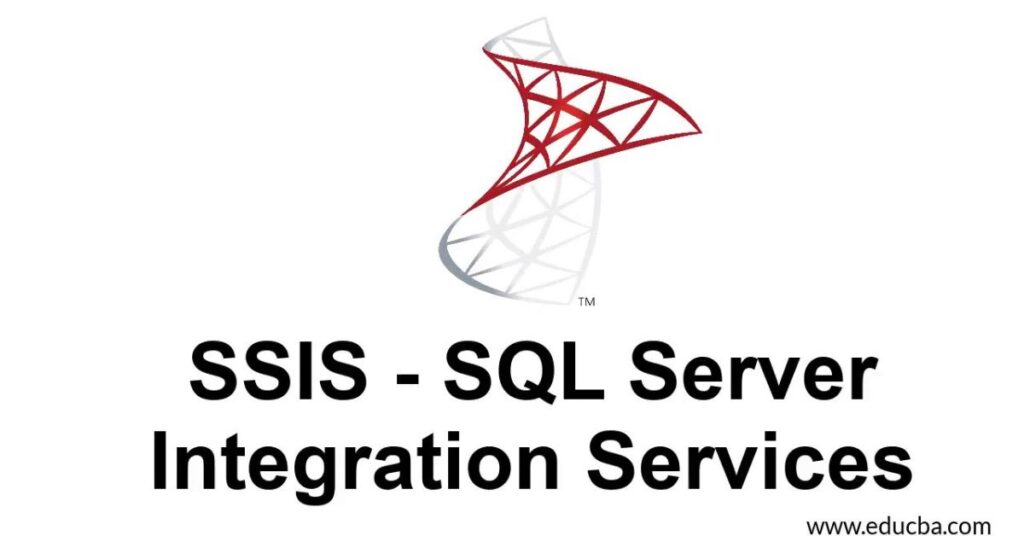SSIS 816 is a powerful data transformation tool used for data integration. It helps in moving and transforming data between different sources. SSIS is widely used in ETL processes to extract, transform, and load data efficiently.
The SSIS 816 is a powerful data transformation tool designed for seamless data integration. It simplifies complex data workflows, making it easy to move and transform data between various sources. Whether you’re dealing with large datasets or complex data manipulations, SSIS 816 ensures efficient and reliable data processing.
SSIS 816 is a powerful data transformation tool. It helps in integrating data from various sources. With SSIS 816, you can easily manage and transform large datasets efficiently.
What is SSIS?

SSIS, or SQL Server Integration Services, is a data integration tool from Microsoft. It allows users to move and transform data from various sources. SSIS is widely used for data warehousing and ETL (Extract, Transform, Load) processes.
With SSIS, you can automate workflows and maintain data consistency. It supports a variety of data sources, including databases, Excel files, and flat files. SSIS provides a powerful platform for managing complex data migration and transformation tasks.
History of SSIS 816?
SSIS 816 is an advanced version of SQL Server Integration Services. It builds on the capabilities of earlier versions, enhancing performance and usability. Introduced as part of the SQL Server suite, SSIS 816 continues to improve data integration and transformation.
The development of SSIS 816 focused on user feedback and industry needs. It introduced new features like improved data flow performance and enhanced support for cloud integration. SSIS 816 represents Microsoft’s commitment to providing robust data management solutions.
Why SSIS 816 is Needed in the Modern World?

SSIS 816 is crucial in the modern world for efficient data management. With the exponential growth of data, organizations need reliable tools to integrate and transform data from various sources. SSIS 816 provides the scalability and performance required to handle large datasets.
SSIS 816 supports cloud integration, which is essential for businesses leveraging cloud technologies. It simplifies complex data workflows and ensures data accuracy and consistency. In today’s data-driven landscape, SSIS 816 helps organizations make informed decisions and maintain a competitive edge.
What is SSIS 816 used for?
SSIS 816 is used for data integration and transformation. It allows users to extract data from multiple sources, transform it as needed, and load it into a destination system. This process is essential for building data warehouses and managing data flows.
SSIS 816 is used for automating data migration and synchronization tasks. It can handle complex workflows, ensuring data consistency and accuracy across various platforms. SSIS 816 is an essential tool for businesses that need to manage large volumes of data efficiently.
Data Loading (Bulk Data):
Data loading, especially bulk data loading, is a critical process in data management. It involves importing large volumes of data into a database or data warehouse efficiently. This process ensures that massive datasets are available for analysis and reporting without significant delays.
Efficient bulk data loading minimizes the impact on system performance and reduces downtime. Tools like SSIS 816 are designed to handle these tasks, ensuring data is loaded quickly and accurately. This capability is vital for businesses that rely on timely and accurate data for decision-making.
Data Archiving:
Data archiving is essential for managing historical data efficiently. It involves moving inactive data to a separate storage system where it can be retained securely. This process helps in freeing up valuable storage space and improving system performance.
Data archiving ensures compliance with regulatory requirements for data retention. Archived data can be accessed when needed without impacting the performance of active systems. This practice is crucial for maintaining an organized and efficient data management strategy.
Data Loading:
Data loading is the process of transferring data from one location to another, typically from source systems to target systems such as databases or data warehouses. It involves extracting data, transforming it to fit the target schema, and then loading it into the destination.
Efficient data loading ensures that data is moved accurately and quickly, minimizing downtime and maintaining data integrity. Tools like SSIS 816 streamline this process by automating workflows and providing robust error handling and logging capabilities. This is crucial for organizations handling large volumes of data that require timely and accurate updates.
Data Cleaning and Mining:
Data cleaning and mining are essential processes in preparing and extracting valuable insights from data. Data cleaning involves identifying and rectifying errors or inconsistencies in the dataset, ensuring data quality before analysis.
Data mining, on the other hand, involves exploring large datasets to discover patterns, trends, and relationships that can inform business decisions. These processes are critical for organizations seeking to leverage data-driven strategies effectively.
Tools like SSIS 816 support data cleaning and mining by providing robust data transformation capabilities and integration with analytical tools. They enable businesses to extract meaningful insights from their data, leading to informed decision-making and improved operational efficiency.
Feature of SSIS Packages for Data Movement and Transformation:

SSIS packages offer powerful features for data movement and transformation. They enable users to define complex data workflows, including extracting data from multiple sources, transforming it according to business rules, and loading it into various destinations.
Key features include built-in transformations such as sorting, merging, and aggregating data, as well as support for scripting and custom components to handle specialized data operations. These capabilities ensure flexibility and scalability in managing diverse data integration tasks.
Furthermore, SSIS packages provide scheduling and monitoring functionalities, allowing for automated execution and real-time tracking of data movements. This makes SSIS a versatile tool for handling both simple and complex data integration scenarios effectively.
Data Flow Magic:
In SSIS, the “Data Flow” is where the magic happens. It’s a visual interface that allows users to design and manage the movement and transformation of data. This component is crucial for defining how data moves from source to destination, applying transformations along the way.
Within the Data Flow, users can configure various transformations like merging, splitting, aggregating, and cleansing data. This flexibility enables SSIS to handle intricate data processing tasks efficiently, making it a powerful tool for data integration and transformation workflows.
Drag-and-Drop Design:
SSIS offers a drag-and-drop design interface that simplifies the creation of data integration workflows. Users can easily drag components such as data sources, transformations, and destinations onto a design surface.
This intuitive approach allows for rapid development without requiring extensive coding knowledge. By simply connecting these components visually, users can configure complex data flows and transformations efficiently.
The drag-and-drop design feature in SSIS enhances productivity by streamlining the process of designing and implementing data integration tasks, making it accessible to both developers and non-technical users alike.
Control Flow:
In SSIS, the Control Flow defines the workflow and execution logic of tasks and containers. It orchestrates the sequence and conditions under which tasks are executed, allowing for complex control over data integration processes.
Users can define tasks such as data extraction, data loading, and workflow branching within the Control Flow, enabling comprehensive management of data flow execution.
The Control Flow in SSIS plays a pivotal role in coordinating and executing tasks, ensuring that data integration processes are executed efficiently and in accordance with defined business rules and conditions.
Connection Managers:
In SSIS, Connection Managers serve as configurations for connecting to various data sources or destinations. They provide the necessary details such as server names, authentication methods, and database names to establish connections.
Connection Managers are essential for managing the connections used throughout SSIS packages, ensuring consistency and security in data integration tasks.
By configuring Connection Managers, users can seamlessly handle different data sources and destinations within SSIS, facilitating efficient data movement and transformation workflows.
Scripting and Expressions:
Scripting and expressions in SSIS provide powerful tools for customizing data integration workflows.
Scripting: SSIS allows users to incorporate custom scripts using languages like C# or VB.NET. This flexibility enables complex data transformations or interactions with external systems beyond built-in functionalities.
Expressions: Expressions in SSIS are used to dynamically configure properties at runtime. They allow for conditional logic, mathematical operations, and concatenation, enhancing the flexibility and reusability of SSIS packages.
Together, scripting and expressions empower users to tailor SSIS packages to specific business needs, ensuring efficient and adaptable data integration solutions.
Error Handling Spells:
Error handling in SSIS is crucial for ensuring robust data integration workflows.
Error Handling: SSIS provides various mechanisms, such as “OnError,” “OnTaskFailed,” and “OnWarning,” to manage errors during package execution.
Spells: Metaphorically speaking, these mechanisms act like spells that can be cast to manage and mitigate errors gracefully, ensuring data integrity and continuity in processing.
Implementing effective error handling spells in SSIS enhances package reliability, allowing for proactive management of exceptions and ensuring smooth data flow through comprehensive error management strategies.
Deployment Potions:
In SSIS, deployment potions refer to strategies and tools used for deploying SSIS packages across different environments.
Deployment Strategies: SSIS offers options for deploying packages to various destinations such as file systems, SQL Server, or Azure. This ensures packages can be deployed to different environments seamlessly.
Management Tools: Tools like SQL Server Management Studio (SSMS) or Azure Data Factory provide interfaces for managing deployments, including versioning, scheduling, and monitoring package executions.
Using deployment potions effectively streamlines the process of deploying SSIS packages, ensuring they operate consistently across development, testing, and production environments with minimal effort.
Guide to Creating an SSIS 816 Package: Unveiling the Power of Data Integration

Creating an SSIS 816 package begins with defining data sources and destinations. Utilize SSIS’s drag-and-drop interface to select and configure connectors for databases, files, or cloud services. Next, design data flows by adding transformations like sorting, merging, or cleaning data to meet specific business requirements.
After setting up data flows, configure the control flow to orchestrate the execution order of tasks. Define tasks such as data extraction, loading, and validation using control flow components like sequence containers or loops. This step ensures that data integration processes execute smoothly and in the desired sequence.
Enhance package robustness with error handling. Implement error outputs in data flow components to manage and redirect erroneous data. Utilize event handlers in control flow to capture and respond to errors, ensuring data integrity and package reliability throughout execution.
Create a SSIS Project:
Creating an SSIS project involves several key steps:
Launch SQL Server Data Tools (SSDT): Start by opening SQL Server Data Tools, which is the integrated development environment (IDE) for SSIS.
Create a New SSIS Project: Choose “File” > “New” > “Project” and select “Integration Services Project” from the templates. Give your project a meaningful name and choose a location to save it.
Add SSIS Packages: Within the project, add new SSIS packages by right-clicking on the “SSIS Packages” folder and selecting “New SSIS Package.” This opens the SSIS package designer where you can define data flows, control flows, and other components.
Configure Connection Managers: Set up connection managers to connect to various data sources and destinations. Right-click on “Connection Managers” in the SSIS package designer and choose the appropriate connection manager type (e.g., SQL Server, Flat File, Excel).
Design Data Flows and Control Flows: Drag and drop data flow components (such as source, transformation, and destination tasks) onto the design surface to define how data moves and transforms within the package. Use control flow tasks (such as Execute SQL Task, File System Task) to sequence operations and manage workflow logic.
Configure Package Properties: Set properties such as logging options, error handling settings, and package protection levels as per project requirements.
Build and Deploy: Once the SSIS packages are designed and tested, build the project to generate deployment files (.ispac). Deploy the packages to the desired SQL Server instance or Integration Services Catalog for execution.
By following these steps, you can effectively create and manage SSIS projects to handle data integration tasks within your organization.
Adding Tasks to the Project:
Adding tasks to an SSIS project involves several straightforward steps:
Open SSDT: Launch SQL Server Data Tools (SSDT) or SQL Server Management Studio (SSMS), depending on your version and setup.
Create or Open SSIS Project: If you haven’t already created an SSIS project, follow the steps mentioned earlier to create a new Integration Services Project.
Add Tasks to Control Flow:
In the Solution Explorer, double-click on your SSIS package (`.dtsx` file) to open it in the SSIS package designer.
Switch to the Control Flow tab if it’s not already active.
Drag and drop tasks from the SSIS Toolbox onto the Control Flow design surface. Tasks can include data flow components (like Data Flow Task), control flow components (like Execute SQL Task, File System Task), or other specialized tasks.
Configure Task Properties:
- Double-click on a task to open its properties window.
- Configure task properties such as connections, SQL statements, file paths, and other settings relevant to the task’s functionality.
Connect Tasks with Precedence Constraints:
- Use precedence constraints (arrows) to connect tasks in the Control Flow, defining the order in which tasks should execute.
- Right-click on a task, choose “Precedence Constraint,” and define expressions or constraints (e.g., success, failure) that control the flow between tasks.
Save and Test the Project:
- Save your SSIS package and project frequently as you add tasks and configure them.
- Execute the package locally or deploy it to a testing environment to ensure tasks function as expected.
By following these steps, you can efficiently add and configure tasks within an SSIS project, enabling robust data integration and workflow automation capabilities.
Importance of SSIS 816 package:
The SSIS 816 package holds significant importance in modern data management and integration scenarios. Firstly, it facilitates seamless extraction, transformation, and loading (ETL) of data from diverse sources into centralized databases or data warehouses. This capability is crucial for organizations aiming to consolidate and analyze large volumes of data efficiently.
Secondly, SSIS 816 supports automation of data workflows, reducing manual intervention and minimizing errors during data processing. This automation ensures consistent and timely data integration across various systems, enhancing operational efficiency and decision-making capabilities. Overall, SSIS 816 plays a vital role in enabling scalable and reliable data management solutions that meet the evolving needs of businesses in today’s data-driven world.
Conclusions:
SSIS 816 stands out as a powerful data transformation tool due to its robust capabilities in managing complex data integration tasks. With a user-friendly interface and extensive feature set, it empowers organizations to extract, transform, and load data efficiently from diverse sources into cohesive data structures.
SSIS 816’s support for automation, error handling, and scalability makes it indispensable for modern enterprises seeking to streamline their data operations. By leveraging SSIS 816, businesses can enhance productivity, ensure data accuracy, and derive actionable insights that drive strategic decision-making and operational excellence in today’s competitive landscape.
Frequently Asked Questions:
What distinguishes SSIS 816 from previous versions of SQL Server Integration Services (SSIS)?
SSIS 816 introduces enhanced performance optimizations and expanded support for cloud integration, setting it apart from earlier versions.
How does SSIS 816 facilitate data cleaning and mining tasks?
SSIS 816 facilitates data cleaning and mining tasks through its robust set of transformations and tools. It allows users to apply cleansing operations such as data validation, error handling, and deduplication to ensure data quality. Additionally, SSIS 816 supports data mining by enabling the exploration of large datasets, uncovering patterns, correlations, and trends essential for informed decision-making.
Can SSIS 816 handle real-time data integration tasks efficiently?
SSIS 816 is primarily designed for batch processing and may not be the optimal choice for real-time data integration tasks requiring immediate data updates and responses. For real-time scenarios, consider complementing SSIS with technologies like Azure Data Factory or other streaming platforms that support continuous data ingestion and processing.


















